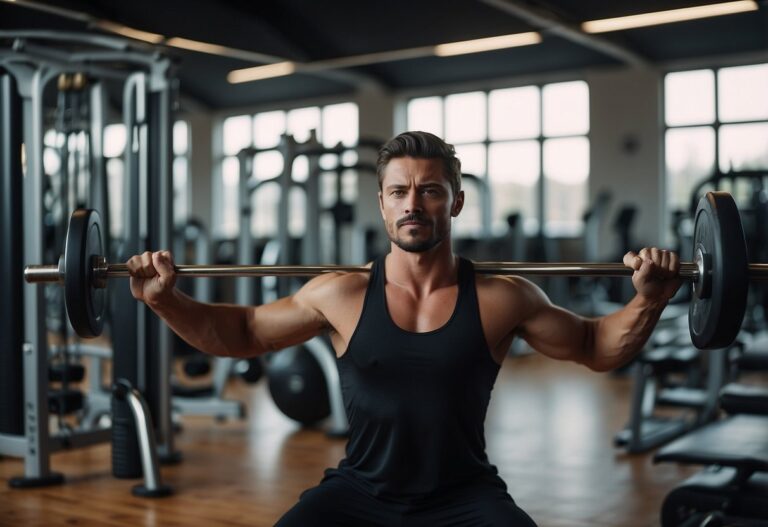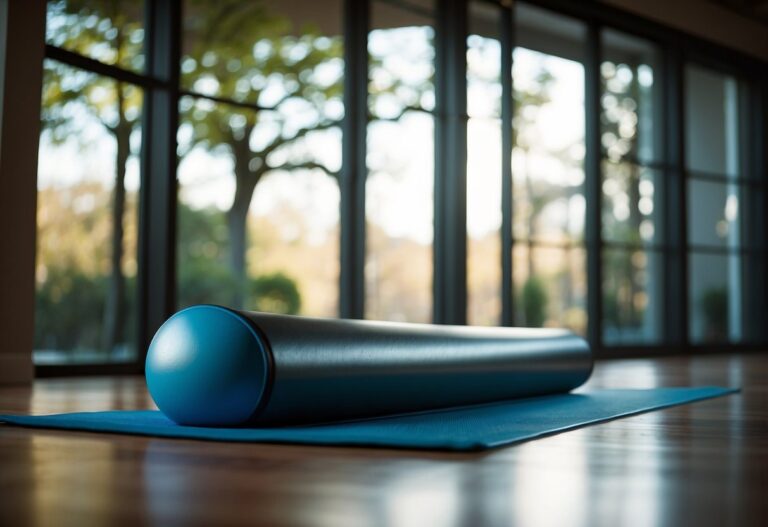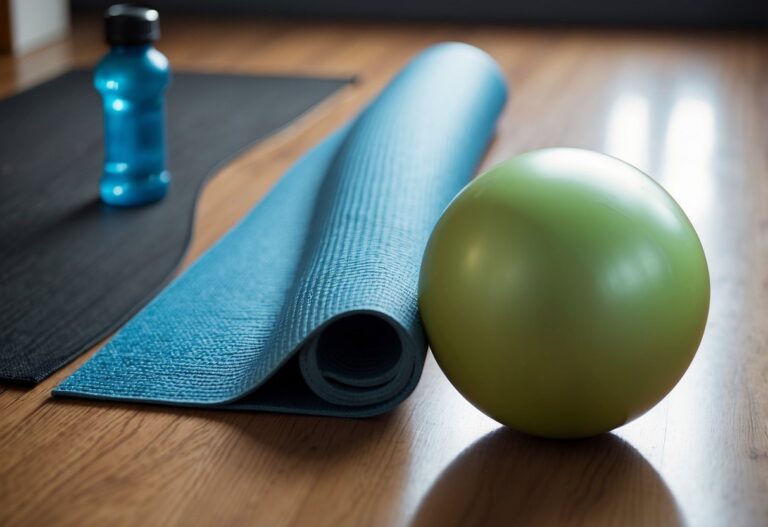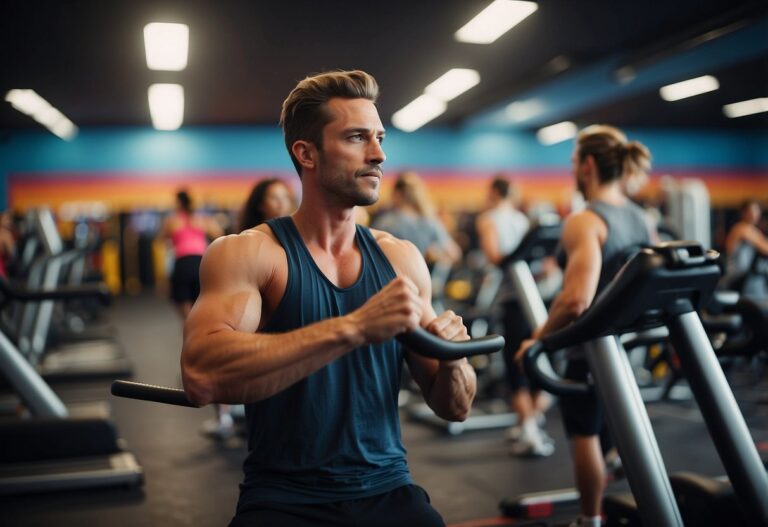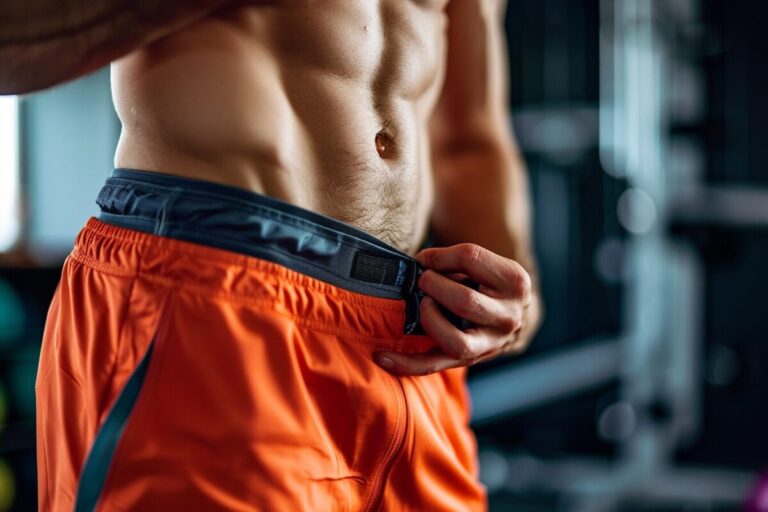Starting a fitness journey as a woman can feel overwhelming with so much advice out there. Whether you’re just beginning or looking to enhance your current routine, having the right tips can make all the difference. Understanding what works best for your body and fitness goals will help you stay motivated and see results.
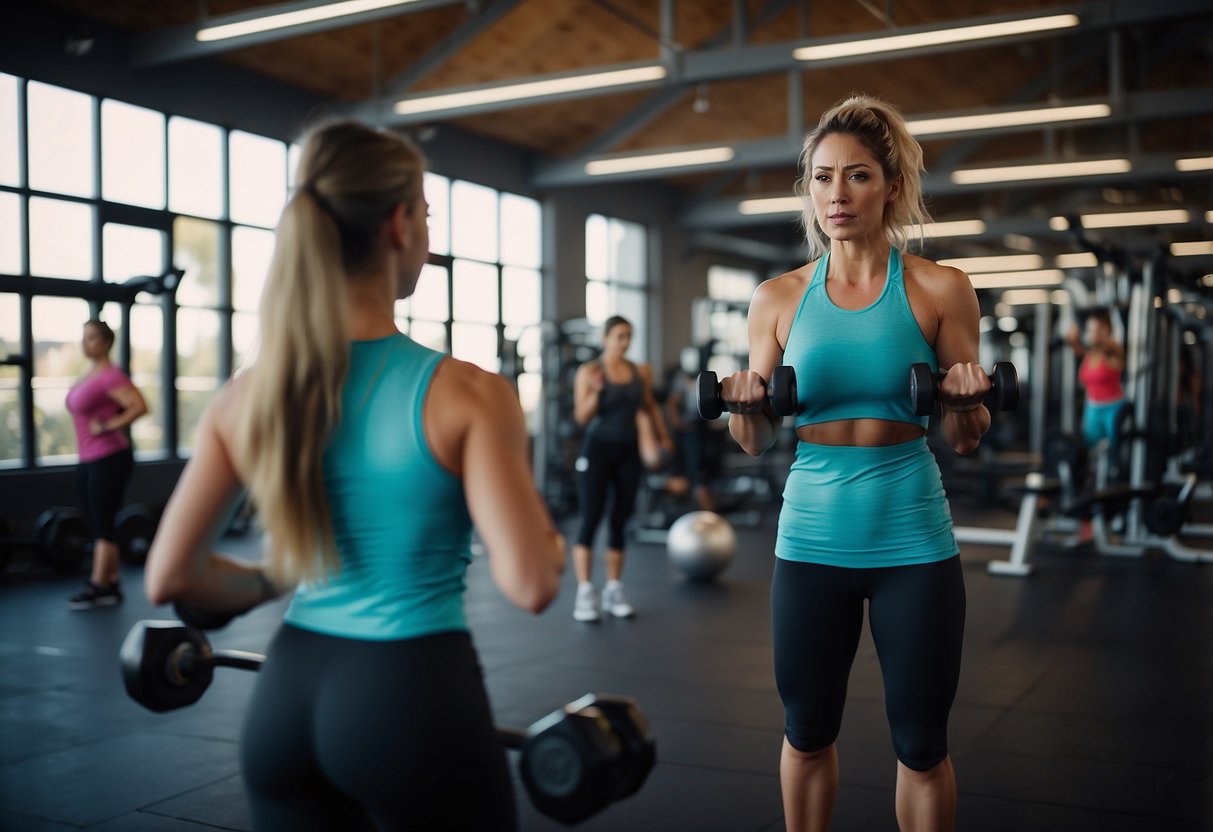
It’s important to remember that fitness isn’t a one-size-fits-all approach. Finding what works for you might take some trial and error, but it’s worth the effort. Engaging in various types of workouts can bring balance and effectiveness to your regimen, helping you to enjoy your fitness journey while achieving your goals.
Warm Up Properly
Warming up before exercise is crucial to avoid injury and improve performance. Start with light cardio, such as marching on the spot for a few minutes. This helps increase your heart rate and blood flow.
Next, include dynamic stretches like lunges with arm movements. Step forward, bending your knees, and spread your arms wide.
Finish with sport-specific movements to prepare your muscles and joints for the workout ahead. For example, if you’re about to run, do some high knees or quick leg swings.
Maintain Consistent Hydration

Proper hydration is key to any workout routine. Aim to drink 16-20 ounces of water about two hours before your workout. This gives your body enough time to absorb the fluids.
During your exercise, it’s best to take small sips of water every 15-20 minutes. This helps you stay hydrated without feeling bloated. Adjust your intake based on how much you sweat.
After your workout, continue to drink water. A good rule of thumb is to drink 16-24 ounces for every pound lost during exercise. This helps replenish lost fluids and aids in recovery.
Focus on Form Over Weight

When starting a new workout, the temptation to lift heavy weights can be strong. It’s important to focus on your form first. Proper technique helps prevent injuries. This ensures you work the muscles intended by the exercise.
Think about how your body feels. Are you targeting the right muscles? If you’re unsure, ask a trainer. Correct form leads to better results.
Don’t rush. Slow and controlled movements are key. Pay attention to your body’s signals. This approach builds a strong foundation for future progress, making your workouts more effective in the long run.
Practising good form now pays off greatly later. Remember, mastery of form sets you up for success. If you’re consistent, you can gradually increase the weight. This ensures long-term progress without setbacks.
Embrace Strength Training
If you want to feel stronger and more confident, strength training is a fantastic way to get there. You’ll be amazed at how lifting weights can transform not only your body but your mind as well.
Start with basic exercises like squats, deadlifts, and bench presses. These movements target multiple muscle groups and provide a solid foundation. You can find beginner routines for women to guide you.
Don’t worry about getting bulky. Women don’t produce enough testosterone for that. Instead, you’ll build lean, toned muscles. If you need a plan, check out this 12-week workout program.
Strength training isn’t just for your body. It also boosts mental health, reducing stress and improving mood. Start small, stay consistent, and watch both your physical and mental strength grow.
Incorporate HIIT Workouts
High-Intensity Interval Training (HIIT) can be a game-changer for your fitness routine. Short bursts of intense activity followed by rest periods make HIIT highly effective.
For example, you might do 20 seconds of jumping jacks followed by a 10-second rest. Repeat this pattern with different exercises like squats and burpees.
Even with a busy schedule, you can fit in a five-minute HIIT workout that includes five exercises done back-to-back. This keeps your heart rate up and maximises calorie burn.
Feeling exhausted but want a quick workout? An under-five minute HIIT session can work wonders.
Whether at home or the gym, HIIT workouts provide flexibility and efficiency. Try exercises like sprints or side planks with dips.
Aim for variety in your HIIT routine to target different muscle groups. Keep challenging yourself to see the best results.
Schedule Regular Rest Days
Rest days are crucial for building strength and endurance. When you work out intensely, your muscles and joints need time to heal. By scheduling regular rest days, you give your body a chance to repair itself.
Rest days help you avoid overtraining. If you push too hard without enough rest, you might see a decrease in performance and a higher risk of injury. Taking time off helps maintain your overall fitness.
During rest days, consider light activities like walking or stretching. These can aid recovery without putting too much strain on your body. Think of rest as part of your progress rather than time lost.
Try Group Fitness Classes

Group fitness classes are a fantastic way to stay motivated and make exercise fun. With a variety of options available, there’s something for everyone.
When you join a group class, you benefit from the energy of others. It’s easier to push yourself when you’re surrounded by people working hard.
Classes like indoor cycling or cardio kickboxing can help you burn hundreds of calories and improve your cardiovascular health. They also feature upbeat music and enthusiastic instructors that keep you engaged.
Trying different classes, such as dance-based workouts or step aerobics, can add variety to your routine and keep things exciting. Exploring different styles helps you find what you enjoy most, ensuring you stick with it.
Connecting with others in the class can also provide a social outlet. Making friends who share similar fitness goals can enhance your experience and keep you committed.
Finally, don’t be afraid to step out of your comfort zone. Trying something new like rock, paper, scissors relays can add a fun twist to your workout and challenge your body in new ways.
Listen to Your Body’s Needs

Listening to your body is essential for effective workouts. Start with a body scan from head to toe. Take note of how each part feels. This can help you understand your body’s current condition.
Ask yourself, “What does my body need today?” It’s crucial to pay attention to your body’s signals. If you’re feeling tired, consider a lighter workout or more rest.
Understanding your body’s basic signals is important. Recognising what pain or discomfort means can prevent injuries. Use these signals to adjust your workout intensity. For more tips, check out this article on listening to your body during a workout.
Incorporate warm-up routines before exercise. A 5-10 minute warm-up can prepare your muscles and reduce the risk of injury. Listen to cues like muscle tightness or fatigue.
Reflect on how your body feels during and after workouts. This self-awareness can lead to better workout choices and long-term fitness success. For more strategies, visit these practical tips to listen to your body.
Set Realistic Goals

Setting realistic fitness goals is key to your success. Start with achievable targets that push you but don’t overwhelm you. Aim for small, incremental changes rather than drastic shifts.
Write down your goals. Use a planner or a calendar to map them out. This makes progress easier to track and keeps you accountable. Break down long-term goals into short-term steps.
Consider your lifestyle and commitments. For example, instead of committing to an hour of exercise daily, start with three 10-minute movement breaks. This approach, known as movement snacks, is easier to maintain.
Regularly review and adjust your goals. As you build strength and stamina, you can increase your targets. This keeps your workout routine challenging and engaging without being unrealistic.
Prioritise Core Strength

Core strength is key to many everyday activities. A strong core supports your spine and improves posture. It helps you perform tasks like lifting, bending, and even standing with ease.
Planks are excellent for building core strength. Start in a push-up position with your forearms on the ground. Keep your body straight and hold the position. This exercise engages multiple core muscles.
If you’re over 40, focusing on core strength is especially important. Activities that mimic real-life movements, such as lifting and reaching, can improve overall health and well-being. Consistent core workouts help maintain balance and stability as you age.
Benefits Of Strength Training
Strength training offers numerous advantages for women, from boosting muscle mass to speeding up metabolism. This form of exercise is not just for building strength; it significantly enhances your overall health and well-being.
Improved Muscle Mass
Engaging in strength training helps you build and maintain muscle mass. As you age, muscle loss is a natural process, but training with weights can slow this down.
By incorporating exercises like squats, deadlifts, and bench presses, you can work on different parts of your body effectively. Building muscle not only shapes your body but also supports joint health and functionality.
Regular strength training sessions contribute to better posture and balance, reducing the risk of falls and injuries. Moreover, having more muscle increases your body’s ability to perform everyday tasks with ease. Imagine carrying groceries or climbing stairs without feeling exhausted – that’s a real benefit!
Enhanced Metabolism
Strength training significantly helps in boosting your metabolism. When you lift weights, you create small tears in your muscle fibres, which your body then repairs, burning calories in the process.
Muscle tissue burns more calories at rest compared to fat tissue. This means that by increasing your muscle mass, you’re also increasing your resting metabolic rate. Activities that elevate your metabolic rate, such as lifting heavier weights and progressively increasing intensity, lead to more calories burned even when you’re not working out.
Additionally, engaging in high-intensity strength training can lead to a phenomenon known as EPOC (excess post-exercise oxygen consumption), where your body continues to burn calories even after the workout is done.
Strength training is not just about looking good; it’s about feeling strong and energetic every day. By making it a regular part of your routine, you can enjoy these metabolic benefits and more.
Cardiovascular Exercise Tips

Cardio exercises are essential for maintaining heart health and improving overall fitness. Here we explore two effective approaches: High-Intensity Interval Training (HIIT) and steady-state cardio workouts.
Effective HIIT Routines
High-Intensity Interval Training (HIIT) is a great way to burn calories quickly and improve cardiovascular health. During HIIT, you alternate short bursts of intense activity with rest or low-intensity exercise. For example, you might sprint for 30 seconds and then walk for a minute. This cycle is repeated several times.
An example HIIT routine:
- Warm-up: 5 minutes of light jogging
- Workout: 30 seconds of sprinting followed by 1 minute of walking, repeated for 15 minutes
- Cool down: 5 minutes of stretching
HIIT can be done with different activities, like jumping jacks, burpees, or cycling. Importantly, the intensity should be high enough that you’re pushing hard during the active intervals. This type of training is especially good if you have a busy schedule since you can achieve significant benefits in a shorter amount of time. This approach is excellent for boosting metabolism and heart health.
Steady-State Cardio
Steady-state cardio involves maintaining a consistent, moderate level of intensity for an extended period. This includes activities like jogging, swimming, or cycling at a steady pace. This type of workout helps build endurance and is less intense on the joints compared to high-impact exercises.
For example, you could go for a 30-minute jog at a comfortable pace. Benefits of this approach include improving overall cardiovascular health and aiding in weight management. It’s important to choose an activity you enjoy to stay motivated.
Typical steady-state session:
- Warm-up: 5 minutes of brisk walking
- Workout: 30 minutes of jogging at a steady pace
- Cool down: 5 minutes of walking and stretching
Steady-state cardio is gentler on the joints and can be more sustainable in the long term, especially for beginners or those recovering from injury. Combining these two types of cardio workouts can help you create a balanced and effective fitness routine.
Balancing Nutrition And Exercise
Balancing what you eat with your exercise routine is key to getting the most out of your workouts. Making sure you have the right pre-workout snacks and post-workout meals helps fuel your body and speed recovery.
Pre-Workout Meals
Eating the right foods before exercising can make a big difference. Ideally, you want to eat a small meal or snack 1 to 3 hours before your workout. This helps provide energy without making you feel too full.
Good options include:
- Whole grains like oatmeal or whole-wheat toast
- Lean proteins such as boiled eggs or yoghurt
- Fruits such as bananas or apples
Avoid: High-fat and high-fibre foods as they can cause discomfort during your workout.
A great example is having a slice of whole-grain toast with peanut butter and a banana. This combination provides carbs for energy and protein for muscle support.
Post-Workout Recovery
Right after working out, your body needs nutrients to recover and rebuild muscle. Eating a meal with protein and carbs within 30 minutes to 2 hours after exercising is ideal.
Post-workout meal ideas include:
- Grilled chicken with brown rice and vegetables
- Smoothies made with Greek yoghurt, berries, and spinach
- Salmon with quinoa and a side of steamed broccoli
Importance: Protein helps repair muscle, and carbs restore glycogen levels.
For example, a smoothie with Greek yoghurt, berries, and a handful of spinach ensures you get a mix of protein, vitamins, and minerals quickly. This combination supports muscle recovery and replenishes energy stores effectively.
Balancing your nutrition this way helps you feel stronger and more energised during and after your workouts.


